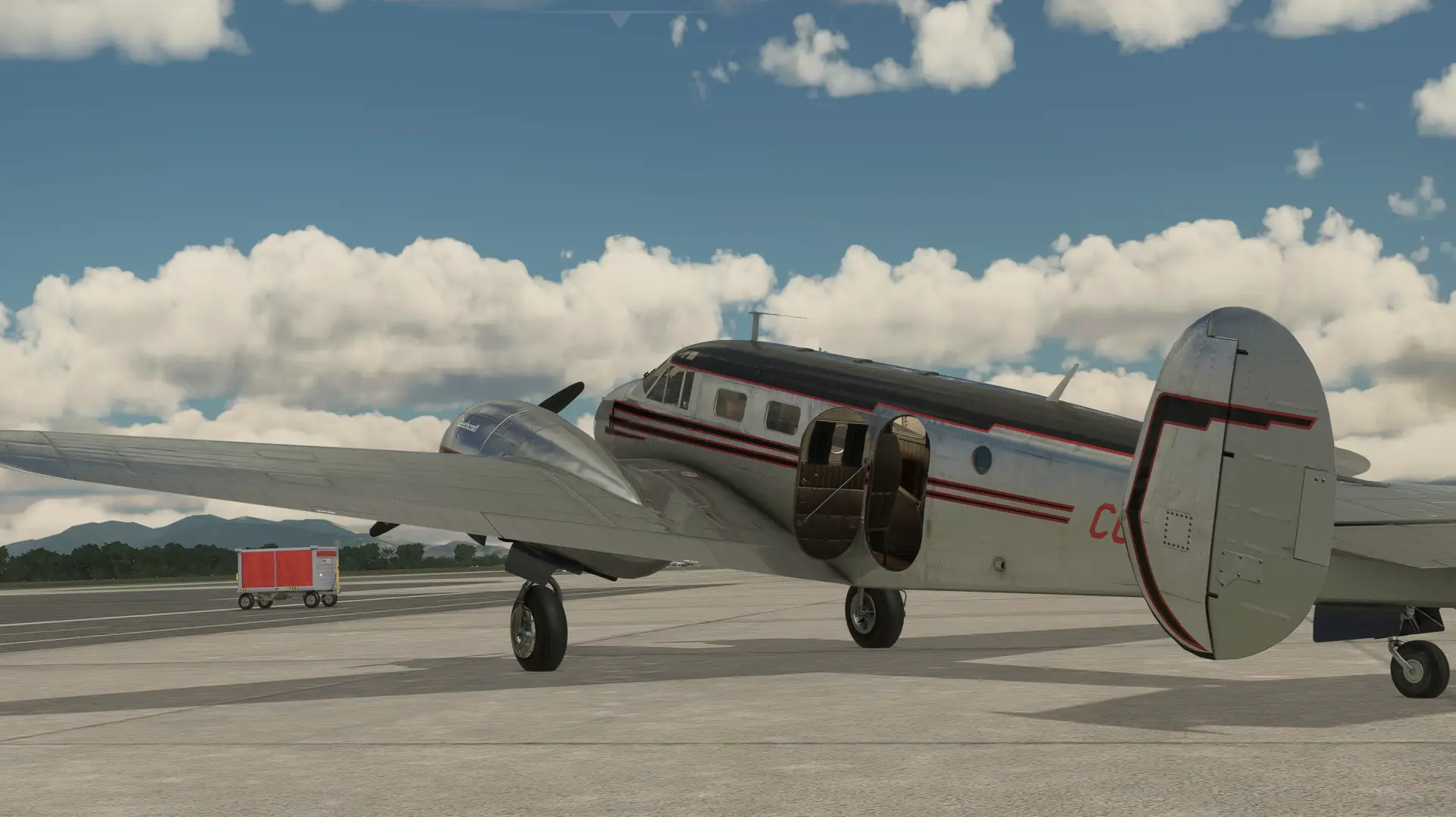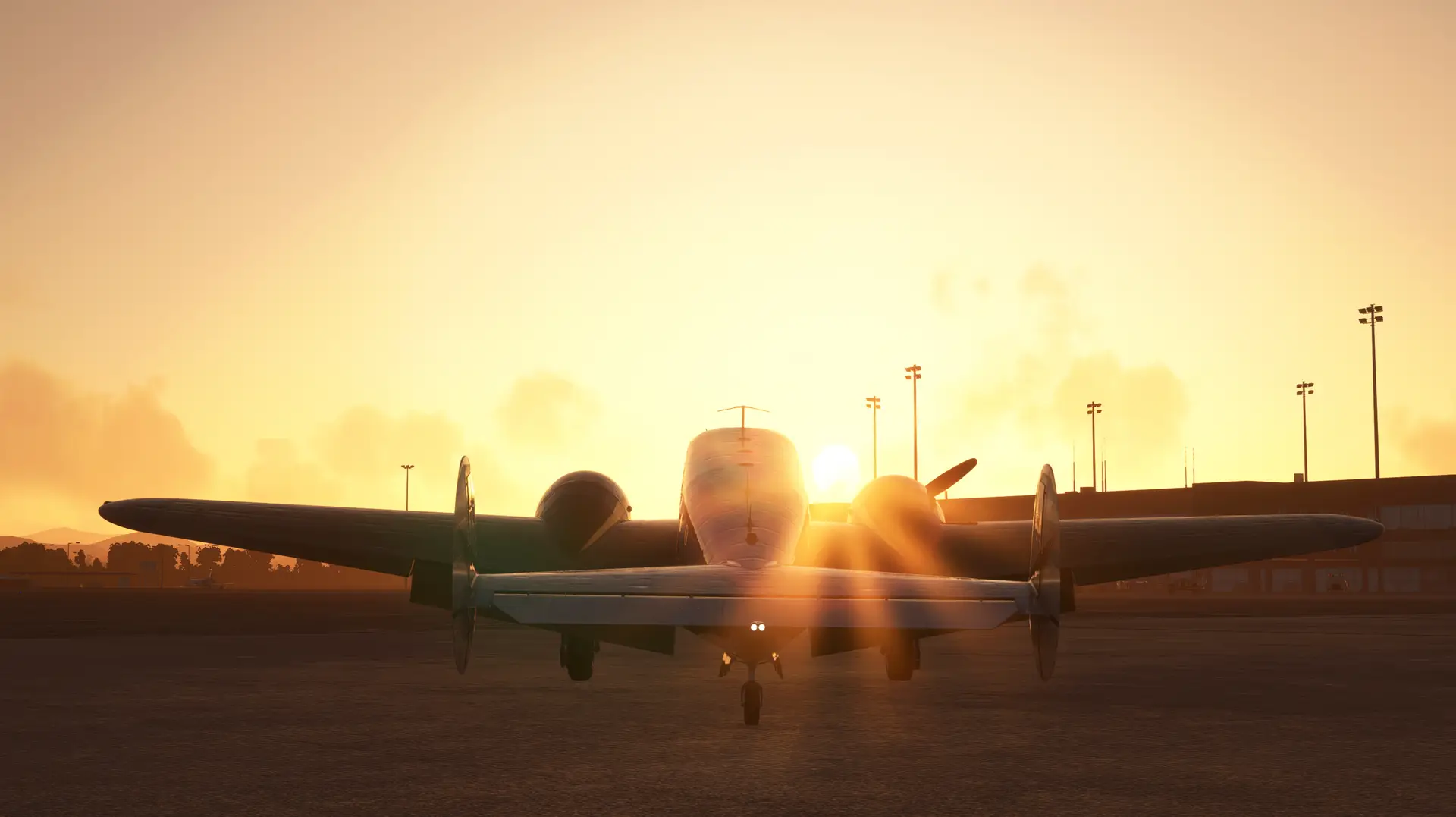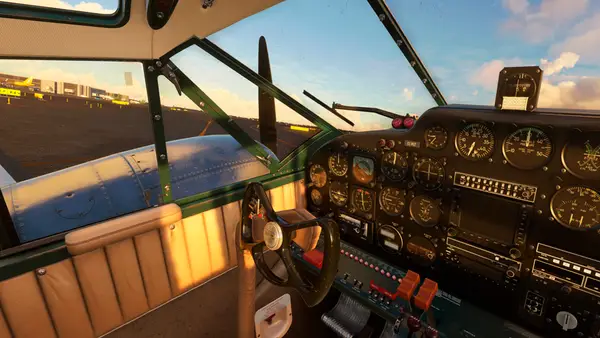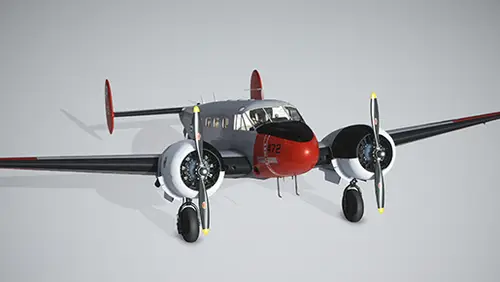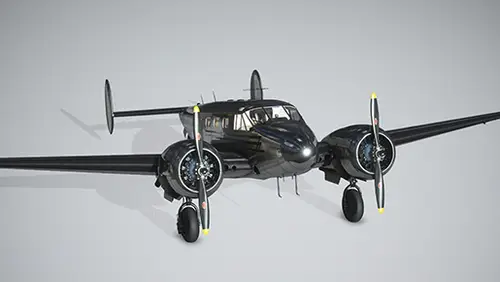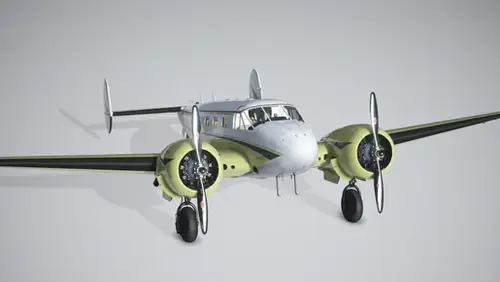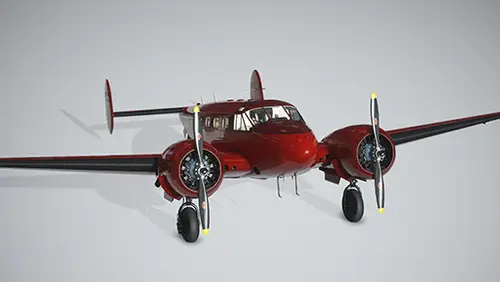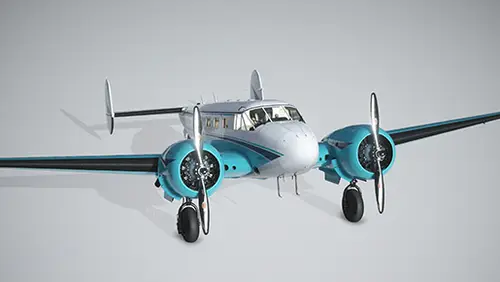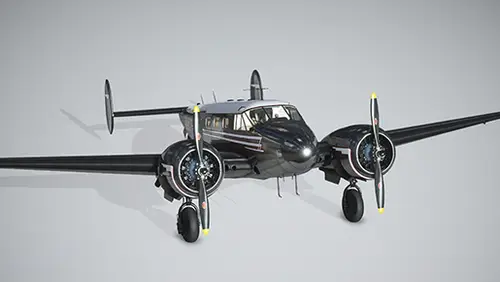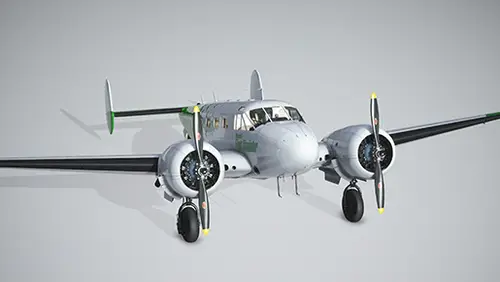The Beechcraft Model 18 is a low-wing, twin-engine utility aircraft produced by American aviation manufacturer Beech Aircraft Corporation. Frequently called the “Twin Beech” or, less commonly, the “Beech 18,” the aircraft is crewed by two and seats six in typical configurations. It took its first flight on January 15, 1937 and it was introduced shortly thereafter. More than 9,000 were manufactured between 1937 and late 1969.
The all-metal Model 18 has proven to be one of the most robust and versatile aircraft ever made. With power to spare thanks to its two muscular radial engines, the Twin Beech has served needs that include passenger and cargo service, business and executive transport, scientific, fire suppression, and mapping, among others. During the Second World War, more than 4,500 of the aircraft were used for the war effort. Designated the C-45, it performed tasks that included forward observation, reconnaissance, and bombing. Today, despite its age, the Model 18 serves in more than a dozen countries throughout the world, a testament to its solid design and rugged construction.
The Model 18 features a slightly-swept main wing with a span of 47 feet, 8 inches, a traditional undercarriage, and a twin-fin empennage that consists of a horizontal stabilizer and two vertical stabilizers. It is powered by two wing-mounted Pratt & Whitney R-985-AN-1 Wasp Junior 9-cylinder radial engines that each produce up to 450 horsepower. The Beech 18 has a range of 1,130 miles, climbs at 1,200 feet per minute, and has a service ceiling of 20,500 feet above sea level. It cruises at 211 miles per hour, stalls at 77 mph, and has a top speed of 230.
Taking to the heights in the Beechcraft Model 18 is an unforgettable experience for any pilot. The storied machine has delivered power, control, and prestige to aviators for decades.


